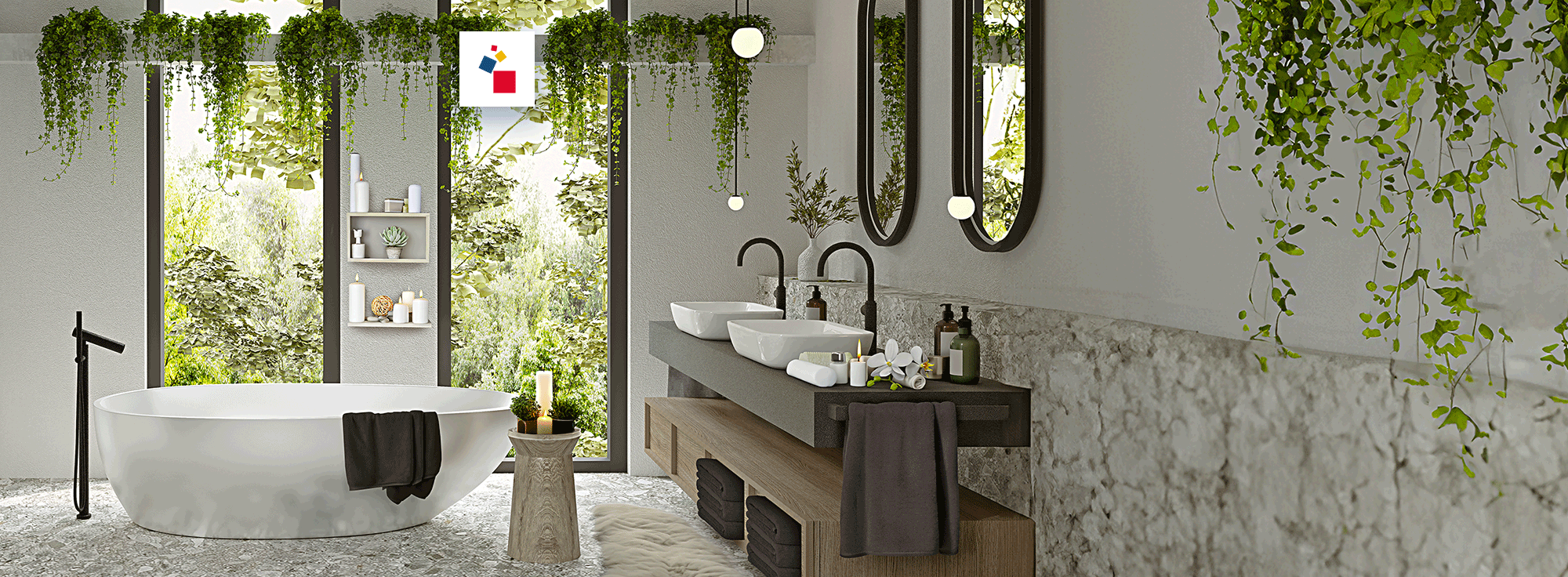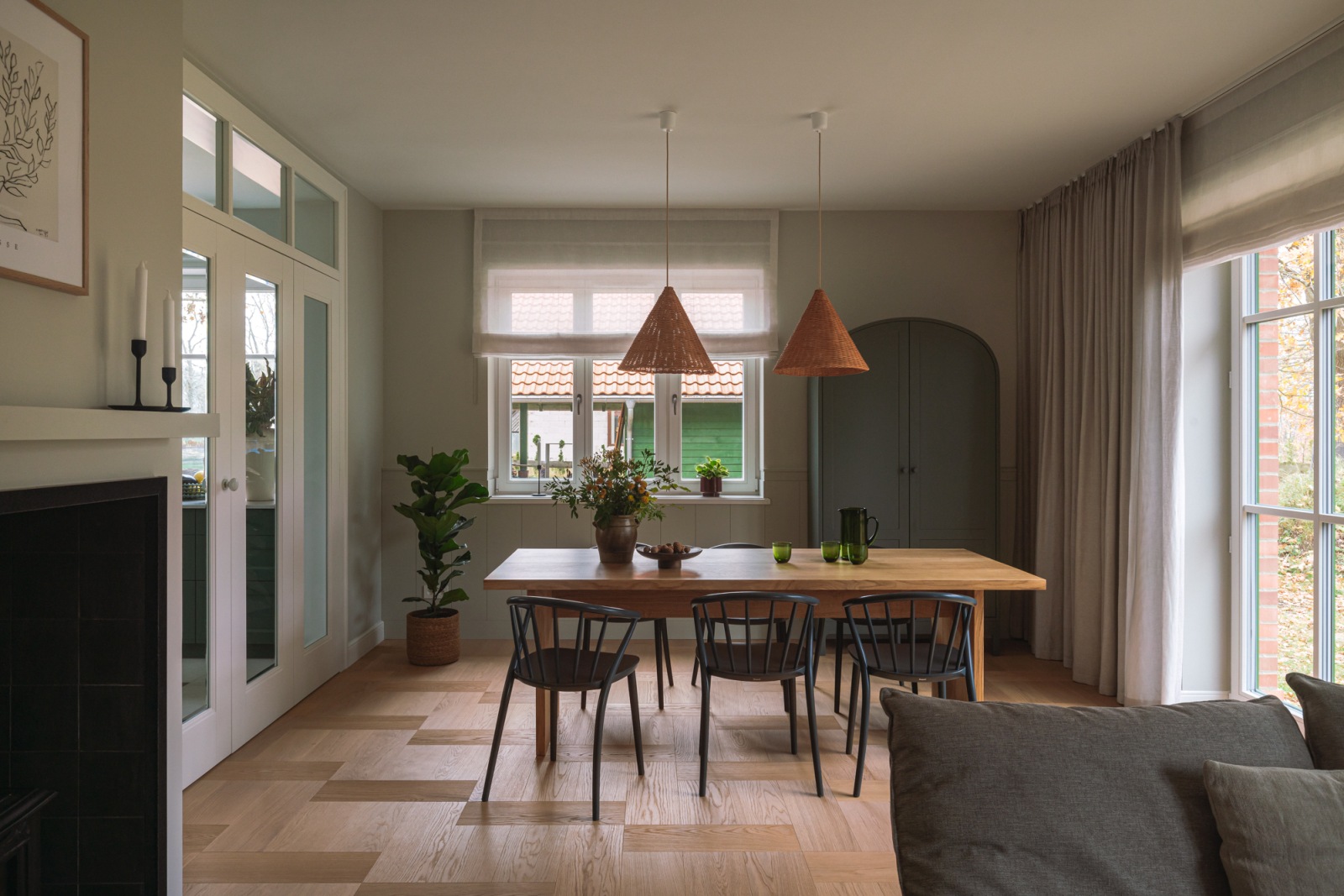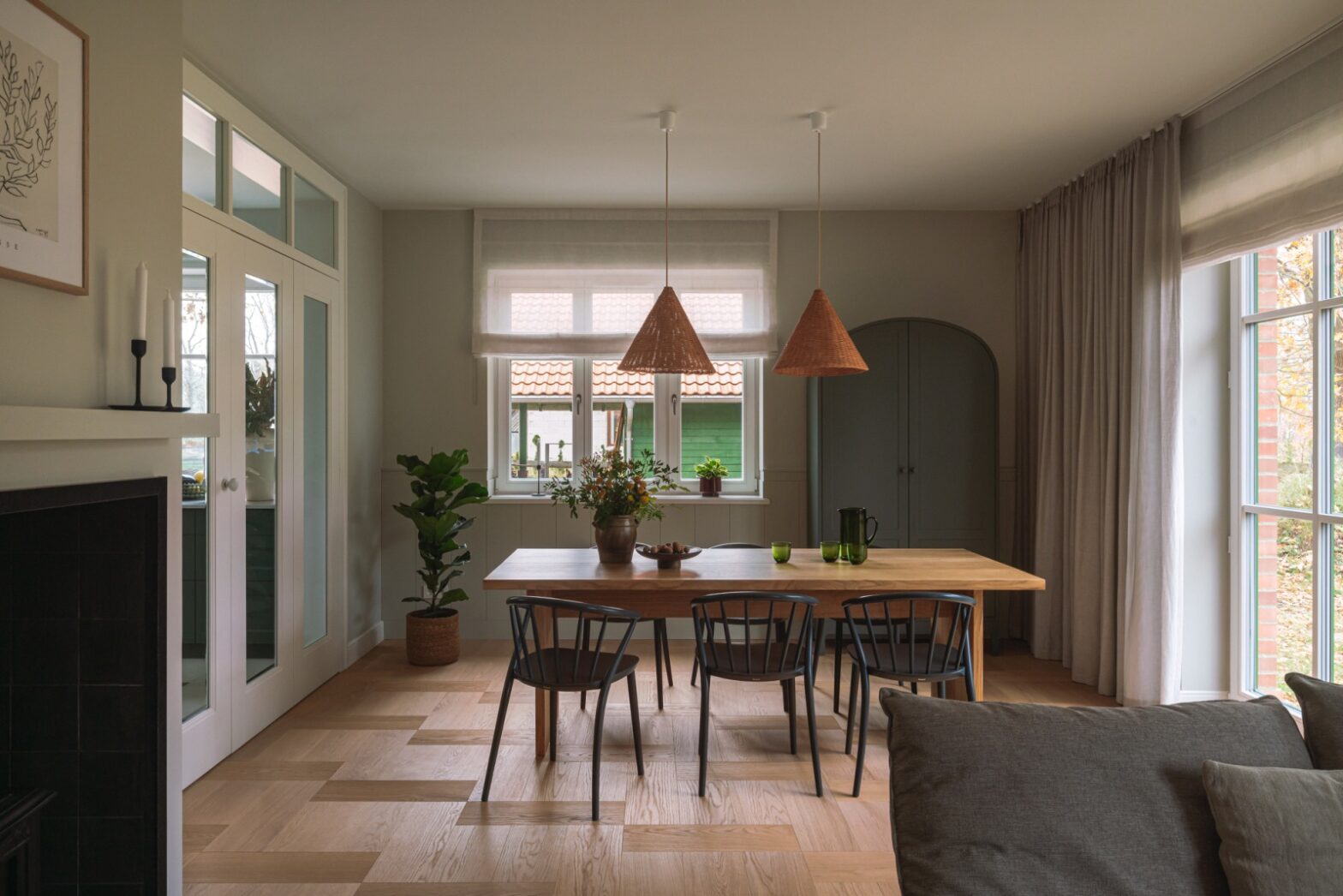The country house with a floor area of approx. 180 m² is a perfect example of the combination of regional architecture with a modern design approach. The interior of the building was created by the architect Duo: Ula Schönhofer and Mateusz Piotrowski. Their design is a reaction to the expectations of the owners who wanted to live in classic interiors who were enriched with contemporary references. The building corresponds to the traditional style of the Warmian Countryside, and its shape with a suitable roof and a red brick facade refers to the local heritage.
A country house – a project tailored to the needs of investors
The real estate owners contacted the designers at the Open Shell level, which enabled them to adapt the interiors to their own expectations without changing the wall layout. The spacious hall, which reaches two floors, offers an impressive entrance to the house. The exposed staircase and the balustrade on the first floor were carefully designed in anthracite and painted, which emphasizes its precise processing and gives the entire building an elegant character.
© Hanna Połczyńska / www.kronika.studio


Traditional interiors with a modern touch
The floor in the hall and in the kitchen is decorated with a striking pattern of solid colored stoneware tiles. The inspiration for the old floors of the men's houses in East Prussia can be found here. Double -glazing doors lead to the living area with a spacious living room and an dining area that is suitable for family meetings. The focus of this room is a large oak folding table that was specially designed for this interior. A characteristic leitmotif is the fold that relates to traditional craft. This element manifests itself in the unusual arrangement of the planks, the pattern of the tiles and in decorative accents such as basket lamps and baskets.
Bright kitchen combined with dining room and living room
The dining room connects through a three -wing glass door with the kitchen, which together with the fireplace and the door from the hall forms a key element of the long living room wall. The “Ziegen” fireplace was integrated into an unusual portal with a break that further emphasizes its decorative character. The second entrance to the kitchen leads from the hall, where the architects decided to use a glass door in black metal frames with a curved fan light. Despite its traditional layout with its large windows and green cupboards, the kitchen is noticeable, a dream for the investor.
Natural elegance and attention to detail
In the other rooms, care was also taken to consistently refer to tradition in a modern way. No artificial aging was used in interior design, but natural elegance was achieved by the selection of materials and details. Remarkable among the elements used are the door handles of Walter Gropius in 1923 and the night lamps in the bedroom from the 1930s. In addition, many decorations and dishes are second -hand or were produced in workshops by the Polish craftsmen.

The result – a country house with soul
The fertile cooperation between architects and investors led to a house that combines tradition and contemporary comfort. The high quality of the surfaces, the carefully selected materials and the participation of regional craftsmen meant that every detail of the interior was developed with masterful precision. Over time, these interiors become even more sophisticated and emphasize the authenticity and timeless value of the project.
About the authors
Ula Schönhofer is an interior design and painter who lives and works in Dansk. She completed two faculties at the Academy of Fine Arts – interior design and painting. She gained her professional experience in the renowned Tricity Studios. She currently operates her own interior design studio throughout Poland. In her work, she places an individual approach for projects, good communication and the highest quality of the implementation.
Mateusz Piotrowski has been an interior design with many years of experience in the industry since 2004. He has worked with Magdalena Adamus' Loft-Ma-Studio for over a dozen years and took part in prestigious projects such as the Mera Spa Hotel in Sopot and the Interiors of World War II -Museum in Gdansk. Known for his attention to detail and his angelic patience. Passion for the modernity of the interwar period and a lover of Bergen.
Interior designers: Ula Schönhofer (Ulasch.com, Instagram: Ula.schonhofer), Mateusz Piotrowski (Pracownia2LF.PL)
Photographer: Hanna Połczyńska (Chronicles.studio, Instagram: Chronicles)
Read too: Single -family house | Interiors | Modern in the middle of the century | Whitemad on Instagram
